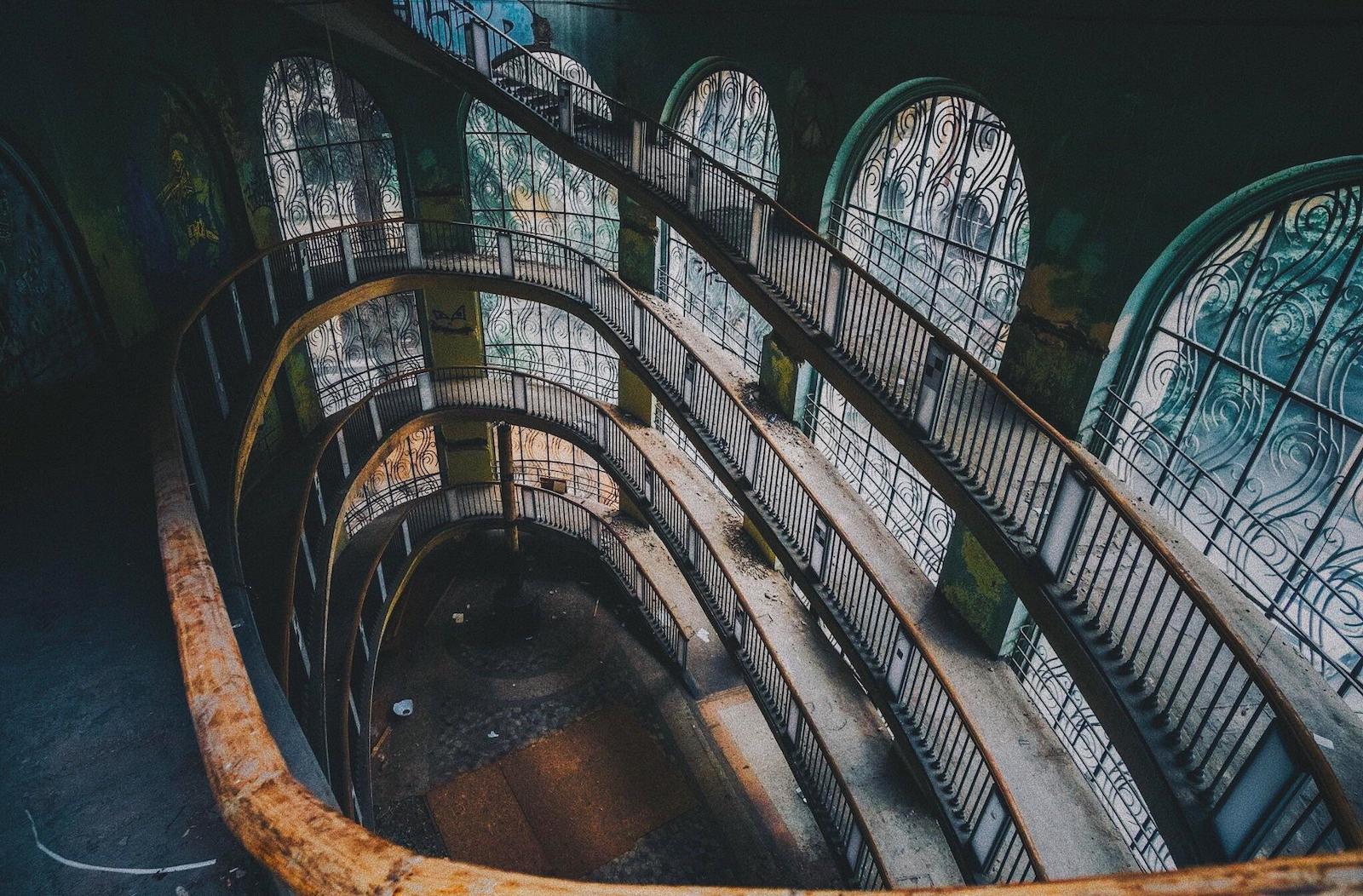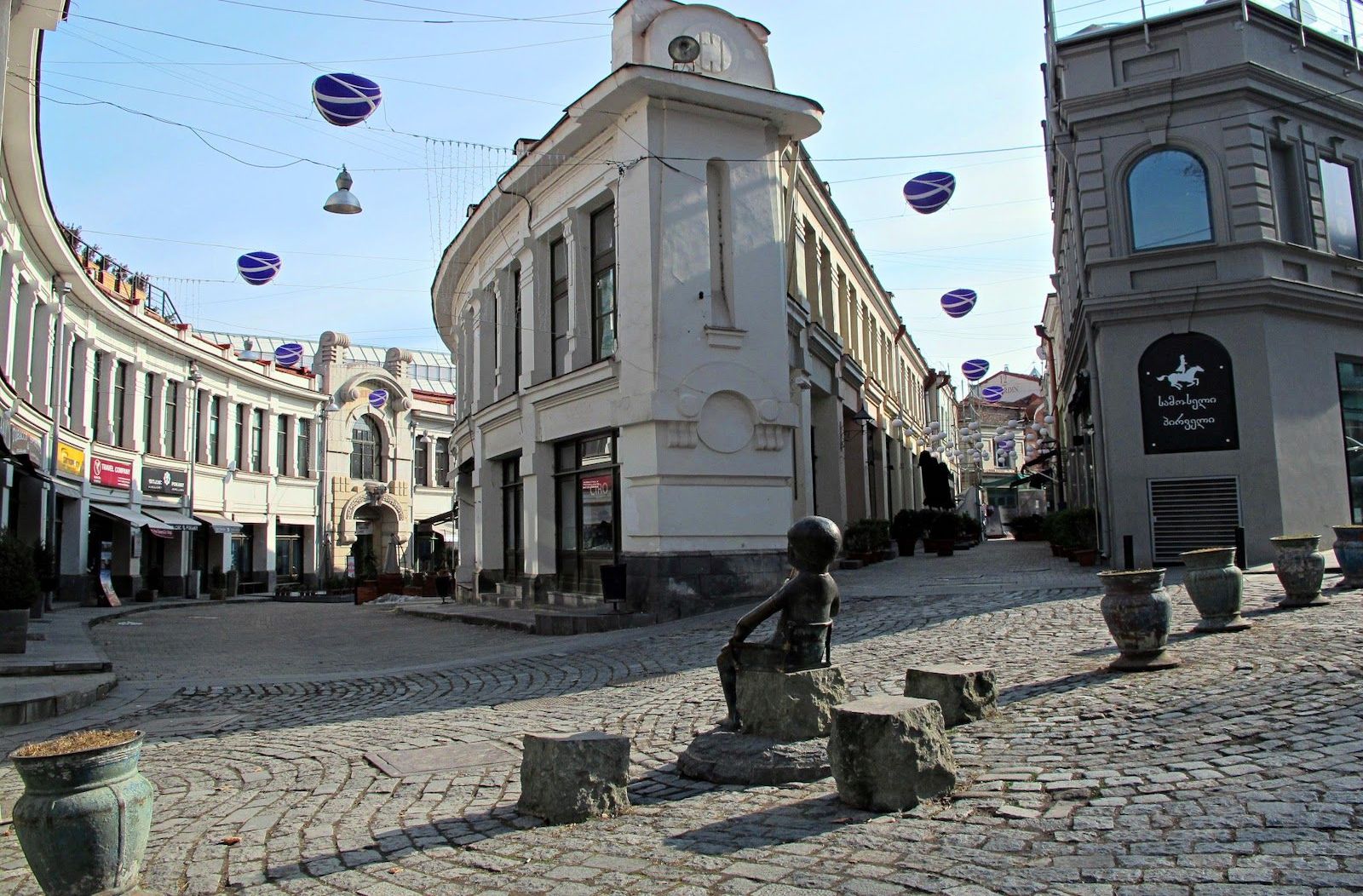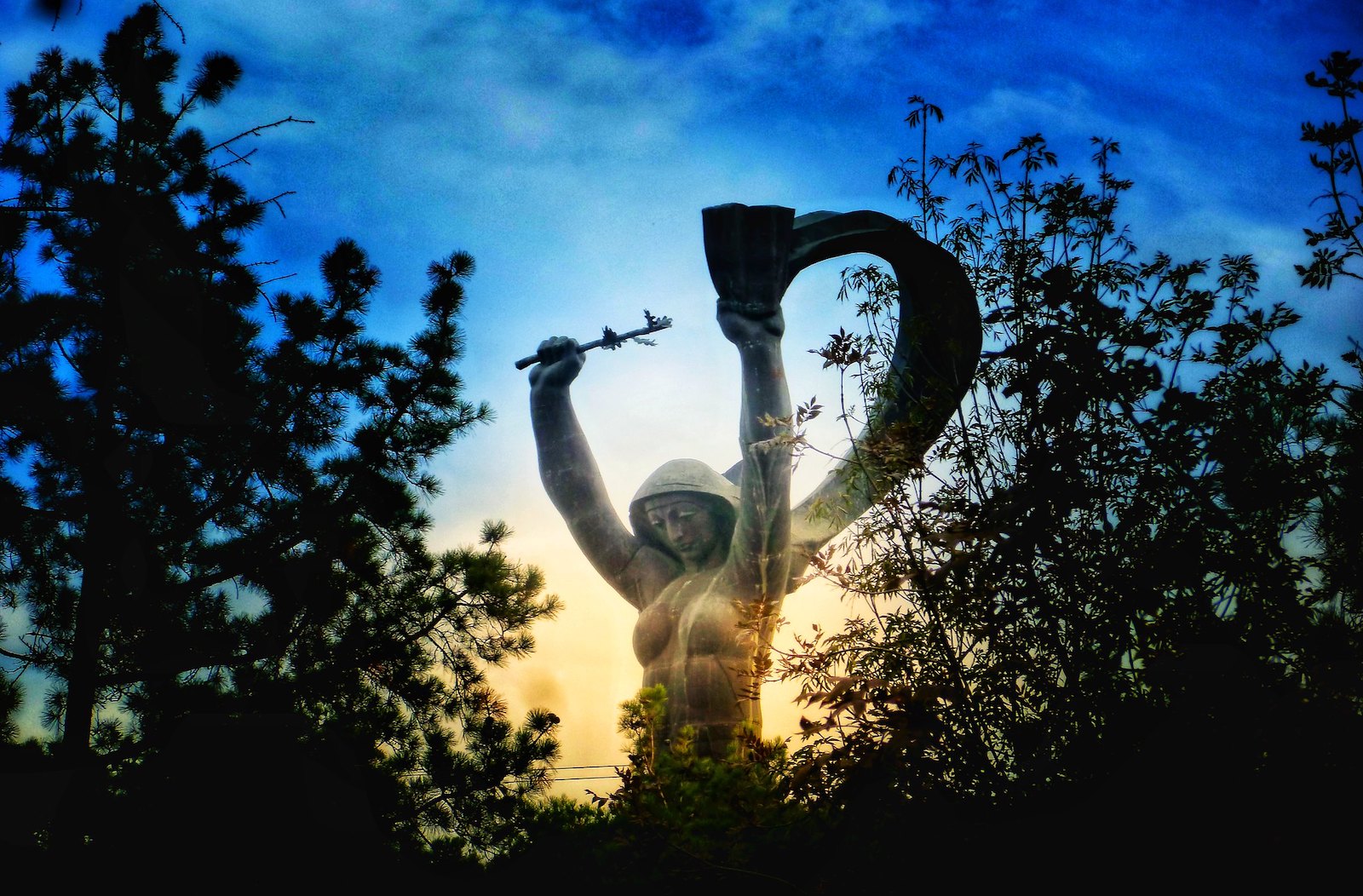
Mtatsminda-Sololaki-Vera
The reason why we’ve decided to combine these three amazing districts is that, first of all, they are right next to each other and second of all, they share the same character. So, here we go.
Mtatsminda
As you come to Tbilisi, you just realize that all the routes lead to Mtatsminda! One of the oldest districts in the capital, Mtatsminda is the place where the history of modern Georgian was created.
Named after the mountain Mtatsminda, this district is one of the key sights of the city.
[/et_pb_text][et_pb_image src=”https://iamtbilisi.com/wp-content/uploads/2020/02/Screen-Shot-2020-04-19-at-7.37.07-PM.png” _builder_version=”4.4.1″ custom_margin=”||1px|||”][/et_pb_image][et_pb_text _builder_version=”4.4.1″ text_font=”||||||||” text_text_color=”rgba(0,0,0,0.55)” text_font_size=”12px” text_line_height=”1.1em” header_font=”|700|||||||” header_2_font=”|700|||||||” header_3_font=”|700|||||||” header_4_font=”|700|||||||” header_5_font=”|700|||||||” header_6_font=”|700|||||||” background_color=”#f1f1f1″ custom_margin=”||33px||false|false” custom_padding=”8px|13px|8px|13px|true|true” hover_enabled=”0″ locked=”off”]✱ Actor Sergo Zakariadze’s grave in Mtatsminda Pantheon, Tbilisi.
[/et_pb_text][et_pb_text _builder_version=”4.4.1″ header_font=”|700|||||||” header_2_font=”|700|||||||” header_3_font=”|700|||||||” header_4_font=”|700|||||||” header_5_font=”|700|||||||” header_6_font=”|700|||||||” custom_margin=”||50px||false|false” border_style_all=”dotted” border_color_bottom=”#f1f1f1″]If you are wearing comfortable shoes and can handle the uphill walk, it is worth wandering through the steep hills of Mtatsminda all the way to the Funicular. You’ll see narrow, tangled streets, unattended or damaged houses with huge cracks, tons of blind alleys, communal courtyards and much more.
Once you get to the Funicular, you can take an amazing ride up to Mtatsminda Park. You should absolutely take this ride, just because the views are mesmerizing and the Park itself has tons of attractions and beautiful spots. But if you prefer not to, then you can visit Mtatsminda Pantheon and Mama Daviti Church instead, right by the Funicular station.
[/et_pb_text][et_pb_image src=”https://iamtbilisi.com/wp-content/uploads/2020/02/sololaki.jpg” show_bottom_space=”off” _builder_version=”4.3.2″ locked=”off”][/et_pb_image][et_pb_text _builder_version=”4.4.1″ text_font=”||||||||” text_text_color=”rgba(0,0,0,0.55)” text_font_size=”12px” text_line_height=”1.1em” header_font=”|700|||||||” header_2_font=”|700|||||||” header_3_font=”|700|||||||” header_4_font=”|700|||||||” header_5_font=”|700|||||||” header_6_font=”|700|||||||” background_color=”#f1f1f1″ custom_margin=”||33px||false|false” custom_padding=”8px|13px|8px|13px|true|true” locked=”off”]✱ Narrow streets of Sololaki.
[/et_pb_text][et_pb_text _builder_version=”4.4.1″ header_font=”|700|||||||” header_2_font=”|700|||||||” header_3_font=”|700|||||||” header_4_font=”|700|||||||” header_5_font=”|700|||||||” header_6_font=”|700|||||||” custom_margin=”40px||50px||false|false” custom_padding=”||||false|false” border_style_all=”dotted” border_color_bottom=”#f1f1f1″ locked=”off”]Sololaki
To the left of Mtatsminda is a district called Sololaki. Art Nouveau neighborhood of Sololaki, where every ezo (courtyard) seems to reveal a new speakeasy bar or tucked-away café. It is an even older area and the first one to be developed according to a pre-existing plan.
Here the houses look like they are going to collapse at any second. Basically, Mtatsminda is just a newer version of Sololaki. These beautiful old houses are what make these districts so captivating. If they are left without attention, they will gradually collapse, like many already have. Dozens of phenomenal buildings lay dormant, boarded up and unused. These houses contain more information about Tbilisi than any history book.
Now to some specific places you can visit while you’re there:
Georgian Hogwarts
[/et_pb_text][et_pb_image src=”https://iamtbilisi.com/wp-content/uploads/2020/02/hogwarts.jpg” show_bottom_space=”off” _builder_version=”4.4.1″ locked=”off”][/et_pb_image][et_pb_text _builder_version=”4.4.1″ text_font=”||||||||” text_text_color=”rgba(0,0,0,0.55)” text_font_size=”12px” text_line_height=”1.1em” header_font=”|700|||||||” header_2_font=”|700|||||||” header_3_font=”|700|||||||” header_4_font=”|700|||||||” header_5_font=”|700|||||||” header_6_font=”|700|||||||” background_color=”#f1f1f1″ custom_margin=”||33px||false|false” custom_padding=”8px|13px|8px|13px|true|true” locked=”off”]✱ The building of Authorized School N6. Photograph by Gocha Nemsadze.
[/et_pb_text][et_pb_text _builder_version=”4.4.1″ header_font=”|700|||||||” header_2_font=”|700|||||||” header_3_font=”|700|||||||” header_4_font=”|700|||||||” header_5_font=”|700|||||||” header_6_font=”|700|||||||” custom_margin=”40px||50px||false|false” custom_padding=”||||false|false” border_style_all=”dotted” border_color_bottom=”#f1f1f1″ locked=”off”]One of the most distinguished and unusual buildings in Tbilisi is the former Women’s Gymnasium Number 3. This 19th-century Neo-Gothic building is really one of the architectural jewels of Tbilisi. The building is often referred to as “little Hogwarts” for its bizarre architecture and design. Actually, the gymnasium was with the chapel which continued the tradition of the Lutheran Church (which as you might have guessed was neglected during the Soviet times). The chapel was on the second floor and its door with crosses on it is still maintained.
Over the years, the building assumed different functions and names as it served as an infirmary during the First and Second World Wars. At one time, it even housed a Law school. At present, the Authorized School No. 6 is located here. The building amazes passers-by with its unique design and mystical atmosphere, especially at night, when the tall, Gothic windows are illuminated with golden lights.
Money Museum
If you are fond of numismatics, then you might be in for a treat. The museum was established in 2001 and is located inside of a bank. The museum’s exposition shows the history of money industry and money circulation in Georgia since the 4th century B.C. as well as currencies from foreign countries: Kolkhuri tetri, Macedonian starter, antique coins, Arabian drachmas, Venetian ducats…Here you can buy copies of old Georgian money and other collectibles.
Writers Union of Georgia
[/et_pb_text][et_pb_image src=”https://iamtbilisi.com/wp-content/uploads/2020/02/W1.jpg” show_bottom_space=”off” _builder_version=”4.4.1″ locked=”off”][/et_pb_image][et_pb_text _builder_version=”4.4.1″ text_font=”||||||||” text_text_color=”rgba(0,0,0,0.55)” text_font_size=”12px” text_line_height=”1.1em” header_font=”|700|||||||” header_2_font=”|700|||||||” header_3_font=”|700|||||||” header_4_font=”|700|||||||” header_5_font=”|700|||||||” header_6_font=”|700|||||||” background_color=”#f1f1f1″ custom_margin=”||33px||false|false” custom_padding=”8px|13px|8px|13px|true|true” locked=”off”]✱ The courtyard of Writers Union, Tbilisi.
[/et_pb_text][et_pb_text _builder_version=”4.4.1″ header_font=”|700|||||||” header_2_font=”|700|||||||” header_3_font=”|700|||||||” header_4_font=”|700|||||||” header_5_font=”|700|||||||” header_6_font=”|700|||||||” custom_margin=”40px||50px||false|false” custom_padding=”||||false|false” border_style_all=”dotted” border_color_bottom=”#f1f1f1″ locked=”off”]The mysterious Writers House of Georgia, located on Machabeli Street in Tbilisi, is a palace of art that keeps many interesting stories and secrets. The owner of this house was Davit Sarajishvili, a pioneer in the production of Georgian Cognac. It is a true architectural monument of the 20th century.
The design of the house is unique and we can see similar mosaics only in three other places in the whole of Europe; the Cologne Cathedral in Germany, the Abbey of Einsiedeln in Switzerland and the Bolshoi Theatre in Moscow. Another interesting fact is that similar tiles were also used on the Titanic.
Nowadays, writers and translators have a great opportunity to visit Writers House of Georgia, stay there and create their literary works in this unique atmosphere. Some rooms are also available for other guests, as the top floor serves as a hotel.
There any many more places worth visiting, like Tchaikovsky Street, Public School N:50, Arts House and so on, but at some point, you’ll have to walk down to Rustaveli avenue again, so let’s talk a little about it.
Rustaveli avenue
[/et_pb_text][et_pb_image src=”https://iamtbilisi.com/wp-content/uploads/2020/02/52210510.jpg” show_bottom_space=”off” _builder_version=”4.4.1″][/et_pb_image][et_pb_text _builder_version=”4.4.1″ text_font=”||||||||” text_text_color=”rgba(0,0,0,0.55)” text_font_size=”12px” text_line_height=”1.1em” header_font=”|700|||||||” header_2_font=”|700|||||||” header_3_font=”|700|||||||” header_4_font=”|700|||||||” header_5_font=”|700|||||||” header_6_font=”|700|||||||” background_color=”#f1f1f1″ custom_margin=”||33px||false|false” custom_padding=”8px|13px|8px|13px|true|true” locked=”off”]✱ Rustaveli Avenue, Tbilisi.
[/et_pb_text][et_pb_text _builder_version=”4.4.1″ header_font=”|700|||||||” header_2_font=”|700|||||||” header_3_font=”|700|||||||” header_4_font=”|700|||||||” header_5_font=”|700|||||||” header_6_font=”|700|||||||” custom_margin=”40px||50px||false|false” custom_padding=”||||false|false” border_style_all=”dotted” border_color_bottom=”#f1f1f1″]Rustaveli is often considered the main thoroughfare of Tbilisi due to a large number of governmental, public, cultural, and business buildings that are located along or near the avenue. This avenue has seen more blood, protests, and revolutions than any other spot in Georgia, specifically in front of the Parliament building, just to give you an idea: this is where the Roses Revolution took place and this is where countless protesters were killed during the Soviet Union.
In short, this is the go-to place when there is something to protest to (there always is) or a revolution to be had. The avenue runs from Freedom Square up to Rustaveli Metro station, packed with shops, banks, restaurants as well as notable spots such as the Opera and Ballet Theatre, National Museum, Rustaveli Theatre, Rustaveli Cinema and so on.
You can spend the day hitting the museums and theatres housed in the impressive neoclassical buildings along the avenue or spend your nights dancing until dawn at powerhouse nightclubs like Bassiani, located underneath a historic soccer stadium.
Liberty Square
[/et_pb_text][et_pb_image src=”https://iamtbilisi.com/wp-content/uploads/2020/02/44794515231_5cff51b87f_b.jpg” show_bottom_space=”off” _builder_version=”4.3.2″ locked=”off”][/et_pb_image][et_pb_text _builder_version=”4.4.1″ text_font=”||||||||” text_text_color=”rgba(0,0,0,0.55)” text_font_size=”12px” text_line_height=”1.1em” header_font=”|700|||||||” header_2_font=”|700|||||||” header_3_font=”|700|||||||” header_4_font=”|700|||||||” header_5_font=”|700|||||||” header_6_font=”|700|||||||” background_color=”#f1f1f1″ custom_margin=”||||false|false” custom_padding=”8px|13px|8px|13px|true|true” locked=”off”]✱ On November 23, 2006, the Liberty Monument depicting St George slaying the dragon, created by Zurab Tsereteli was unveiled in Liberty Square.
[/et_pb_text][et_pb_text _builder_version=”4.4.1″ header_font=”|700|||||||” header_2_font=”|700|||||||” header_3_font=”|700|||||||” header_4_font=”|700|||||||” header_5_font=”|700|||||||” header_6_font=”|700|||||||” custom_margin=”40px||50px||false|false” custom_padding=”||||false|false” border_style_all=”dotted” border_color_bottom=”#f1f1f1″ locked=”off”]Our Liberty Square witnessed many political, social and cultural events throughout Georgia’s history and became the most redesigned and renamed public square in the city.
The most recent change was the removal of Lenin’s statue in 1991 when Georgia regained independence. There are a number of residential houses from the 19th century. Great Russian poet A.S. Pushkin visited one of these houses in 1829. When a park was built right in front of this house in 1885 it was named “Novy Sad”, meaning “New Park” in Russian, but in 1892 it was renamed to “Pushkin Park”.
Its history is very interesting, but for the purpose of keeping this article as short as possible, we’ll refrain from reciting it. From here you can visit Galleria Tbilisi for shopping or just enjoy walking along the Galaktion Tabidze Street, where you can find many restaurants and cafes. But, if you want to see some other parts of the city, you can get anywhere in Tbilisi by taking the subway from the Liberty Square Station.
At the other end of the avenue is the Rose Revolution Square, once called Republic Square and has been the showcase of different regimes, conflicts, and aspirations. Despite being one of the few squares in the city, it keeps transforming, heavily influenced by different powers ruling the country. A closer look at its history and current condition may reveal what Tbilisi’s downtown will actually become: an open, public space for citizens or yet another space of transition for cars and tourists. This is also where Vera starts.
[/et_pb_text][et_pb_image src=”https://iamtbilisi.com/wp-content/uploads/2020/02/a79097b.jpg” show_bottom_space=”off” _builder_version=”4.4.1″][/et_pb_image][et_pb_text _builder_version=”4.4.1″ header_font=”|700|||||||” header_2_font=”|700|||||||” header_3_font=”|700|||||||” header_4_font=”|700|||||||” header_5_font=”|700|||||||” header_6_font=”|700|||||||” custom_margin=”40px||50px||false|false” custom_padding=”||||false|false” border_style_all=”dotted” border_color_bottom=”#f1f1f1″ locked=”off”]Vera
It is what you might call a very “Tbilisi-ish” neighborhood and a very iconic one as well. In fact, there’s even a theatrical performance called “Melodies of Vere”. You should walk through the upper part of the district first and look for the architectural features: they are almost unchanged since the end of the XIX century.
You’ll also bump into a couple of streets such as Kiacheli and Akhvlediani/Perovskaya lined with bars and pubs, as well as tiny cafes located in the courtyards on Barnovi and Zandukeli streets. Quiet and green district of Vera is home to numerous gardens and yards hidden behind the early 19th century buildings.
One of the most notable parks in the district is Vera Park, located at the lower part of it, right next to the giant Concert Hall. It’s a perfect place to walk your dog, have playdates for your children or just relax and enjoy a snack or a drink. There’s also the Chess Palace, where you can play ping-pong, pool or even go bouldering. Basically, if you are looking for an alternative to the noisy, crowded Old Town – quiet, beautiful and mysterious Vera will be a perfect substitute.
[/et_pb_text][et_pb_image src=”https://iamtbilisi.com/wp-content/uploads/2020/02/tree.jpg” _builder_version=”4.4.1″][/et_pb_image][/et_pb_column][/et_pb_row][/et_pb_section]

